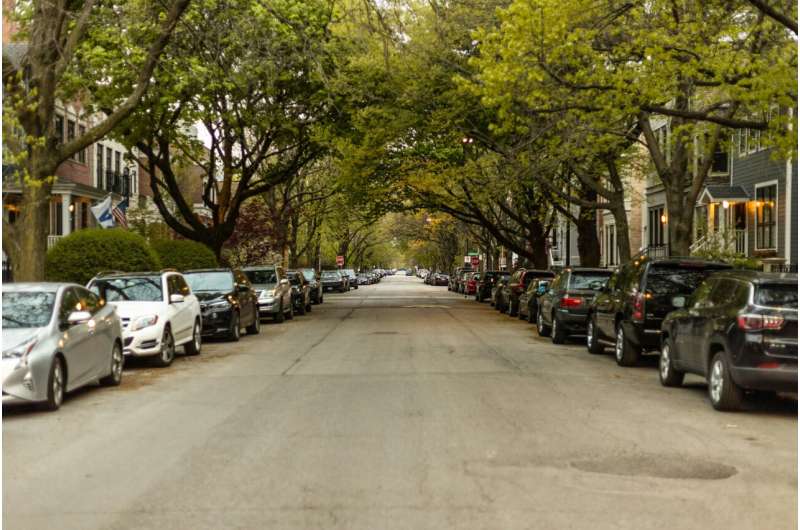This article has been reviewed according to Science X's editorial process and policies. Editors have highlighted the following attributes while ensuring the content's credibility:
fact-checked
trusted source
proofread
An AI model to predict parking availability

In the ever-changing landscape of smart city innovation, researchers have introduced the Residual Spatial-Temporal Graph Convolutional Neural Network (RST-GCNN), which could help users find an on-street parking space more efficiently. The work is published in the International Journal of Sensor Networks.
This new model could help change the urban driving experience and perhaps reduce congestion and pollution by enhancing the prediction of parking availability. As cities grapple with escalating congestion, pollution, and the perpetual quest for efficient urban living, artificial intelligence (AI) could be set to ease one of the daily struggles for drivers and perhaps help us navigate out of gridlock.
Neural networks, inspired by the structure of the human brain, are used increasingly in solving complex problems across diverse domains such as image and pattern recognition, medical diagnostics, natural language processing and translation, and speech recognition. The RST-GCNN discussed in the article represents a sophisticated application of neural network technology tailored to address the ever-present urban challenge of parking availability.
Unlike conventional models, the RST-GCNN integrates a residual structure, efficiently combining spatial and temporal information derived from graph and convolution modules, according to its developers Guanlin Chen, Sheng Zhang, Wenyong Weng, and Wujian Yang of Hangzhou City University, in Hangzhou, China. The RST-GCNN can predict long-term parking occupancy rates by discerning patterns in the parking dataset.
The team has tested their approach on the real-world Melb-Parking dataset and were able to validate the system's efficacy. It has, the work suggests, superior performance in predicting parking occupancy rates compared to baseline models. The new approach holds great promise for city drivers and could be used to streamline an automated parking search process, ultimately reducing congestion and optimizing transport efficiency in busy cities where cars remain a mainstay of transportation.
In the future, the team will expand the application to larger parking datasets with a view to refining prediction accuracy still further. Future iterations will embed weather, temperature, holiday periods, and other vagaries of traffic and parking thus broadening its scope and applicability.
More information: Guanlin Chen et al, Residual spatial-temporal graph convolutional neural network for on-street parking availability prediction, International Journal of Sensor Networks (2024). DOI: 10.1504/IJSNET.2023.135840

















